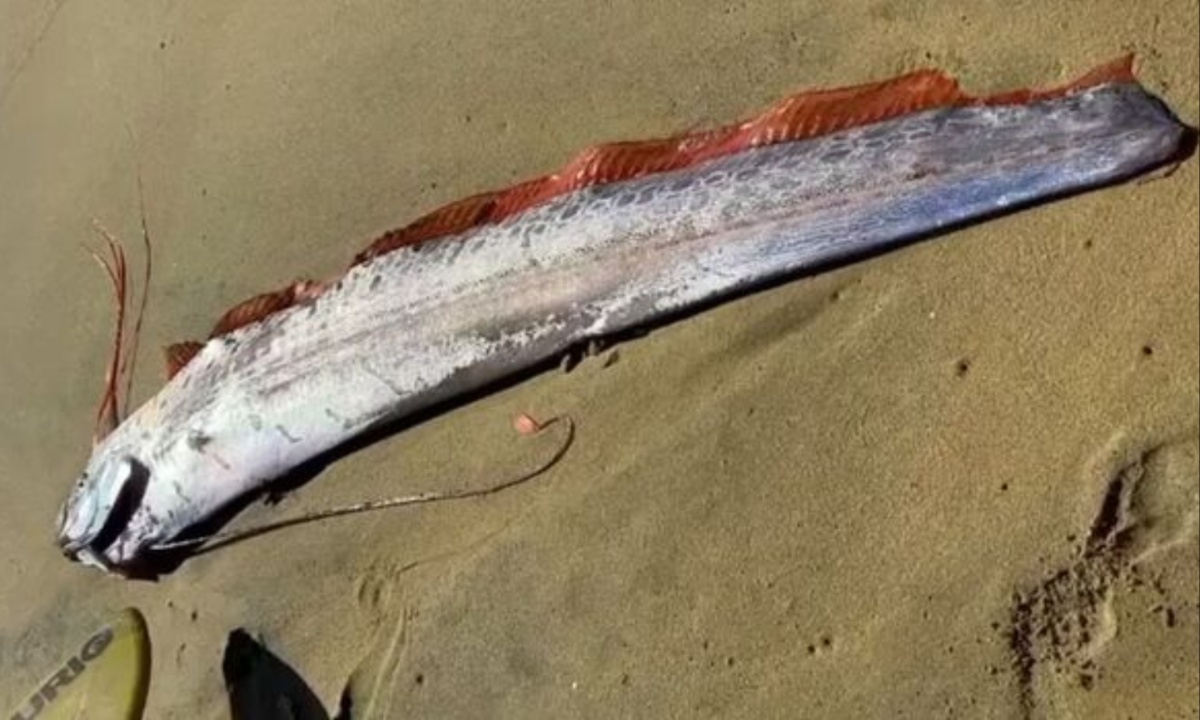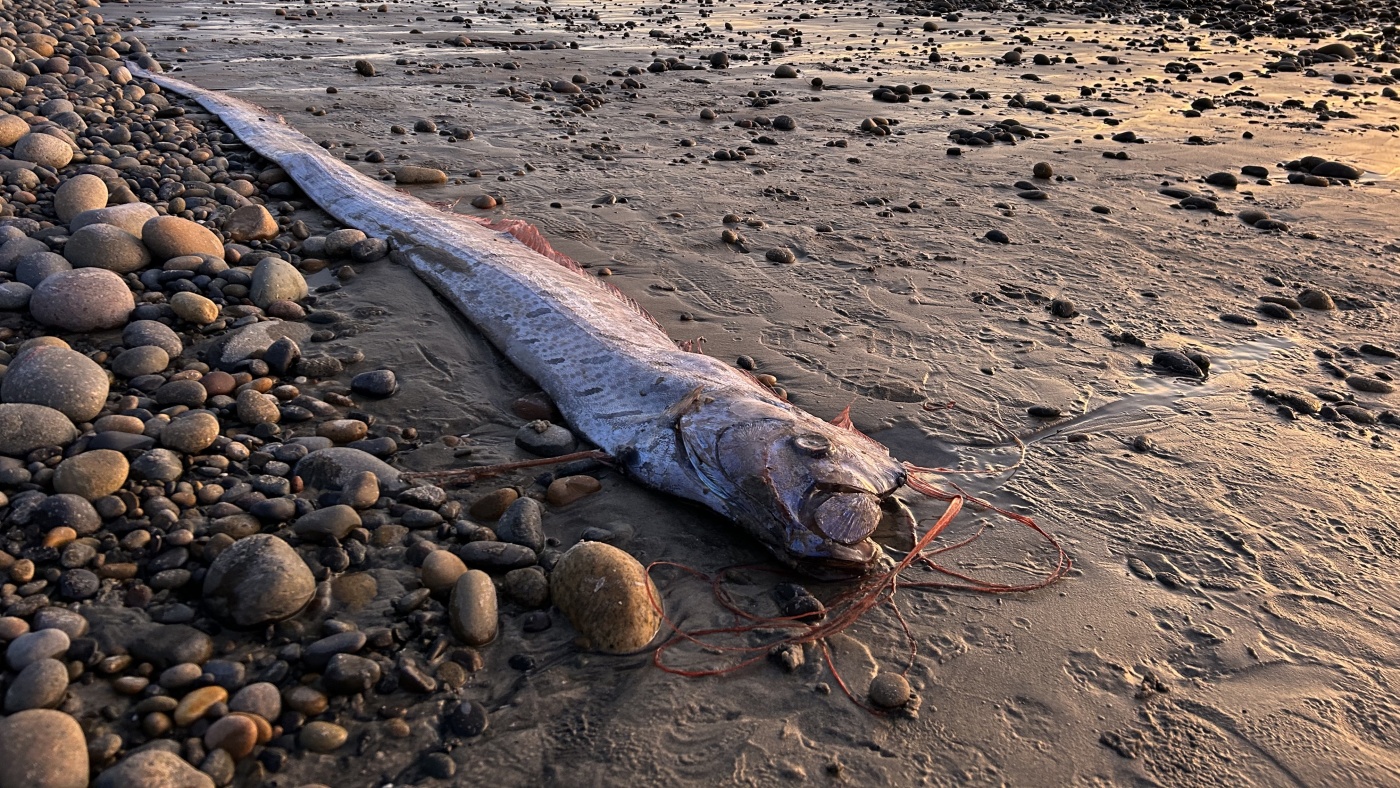An oarfish, a rare deep-sea creature, recently washed ashore on Playa Quemada beach in the Canary Islands on February 10, 2025. Known for its preference to dwell in the ocean’s depths, the sighting of this mysterious fish quickly became a source of superstition and online hysteria. The unexpected beaching of this creature has unleashed a wave of fear, especially with its cultural significance as a harbinger of impending doom in various legends.
Viral Oarfish Sighting Ignites Fear, Folklore, and Earthquake Predictions on Social Media
A video of the stranded oarfish, with its striking shimmering body and vibrant orange fins, went viral shortly after being posted on Instagram. The footage has garnered more than nine million views, with the accompanying images sparking intense reactions from viewers. Over 267,000 likes and thousands of comments flooded the post, many of which voiced concerns that the oarfish’s appearance was an omen of an impending disaster, leading to widespread discussions about its significance.

In Japanese folklore, the oarfish is known as ryūgū no tsukai, or “Messenger of the Sea God,” and is often considered a sign of impending disaster, particularly earthquakes. The creature’s rare appearances are linked to various natural phenomena, with some people interpreting its beaching as an early warning system. The footage of the oarfish stranded on the beach raised these concerns, as viewers immediately drew connections between the creature’s presence and potential earthquakes or tsunamis.
Oarfish Beaching Sparks Superstition and Fear, Linked to Ancient Folklore and Disasters
The myth surrounding the oarfish as a predictor of earthquakes became especially prominent after the 2011 Fukushima nuclear disaster. Reports of oarfish sightings increased prior to significant seismic activity in Japan, fueling the belief that these fish are harbingers of impending natural disasters.
This belief was reinforced by the discovery of multiple oarfish along Japan’s coasts before earthquakes in 2009 and 2010. As such, the beaching of an oarfish has often been seen as a bad omen, especially among social media users who speculated about an earthquake on the horizon.
Despite the widespread belief in the oarfish as an earthquake predictor, scientific organizations like the Ocean Research and Conservation Association of Ireland (ORCA) stress that there is no evidence to support the myth. According to ORCA, the legend of the ryūgū no tsukai remains just that—a cultural tale.
While the sightings of oarfish may be intriguing, they should not be considered reliable indicators of seismic activity or natural disasters. The organization advises against using these sightings as part of any earthquake warning system, reinforcing that the oarfish’s role in folklore should not be mistaken for scientific fact.
